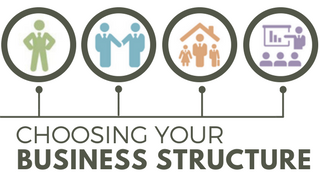Common Business Structures in Australia

When initiating a business in Australia, selecting an appropriate business structure is crucial. This decision impacts aspects such as taxation, liability, and legal obligations for compliance. Common business structures in Australia encompass sole traders, partnerships, companies, and trusts, each with distinct advantages and disadvantages, necessitating careful consideration based on individual business needs.
In choosing the appropriate business structure, consideration should be given to the following among other factors,
- Desired level of control of the business
- Separation of the assets and liabilities of the business and the personal assets and liabilities of the owners
- Family law considerations
- Taxation issues (duty issues, income tax issues such as capital gains tax (CGT), GST, payroll tax)
- Superannuation
- Estate planning issue
- Administration and compliance costs
- Limited liability
Let’s delve into each structure:
- Sole Trader:
- A sole trader is the simplest and most prevalent small business structure in Australia, where the individual owns and operates the business. There is no separate legal entity other than the individual.
- Setting up and running as a sole trader is straightforward, involving minimal paperwork and costs. The business is directly under the control of the owner.
- There are minimal reporting requirements.
- Taxation is on the individual owner who is taxed at the personal rates. For CGT purposes, the sole trader has the option to claim a 50% discount on capital gains on assets held for at least 12 months.
- The downside lies in personal liability for debts and negligence incurred in the course of the business.
- There is no flexibility in tax planning unless they employ family members.
- The business ends when the sole trader ceases working on retirement or death. It is difficult for sole traders to benefit from goodwill after ceasing the working.
A sole trader would usually register for an Australian Business Number (ABN) which identifies the business to the government and the community.
There are very minimal establishment and ongoing costs of being a sole trader. There is no specific legislation which regulates sole traders.
- Partnership:
- Similar to a sole trader, a partnership involves legal responsibility for all aspects of the business, but with shared profits and losses among two or more owners.
- Partnerships are relatively easy to establish and maintain, with fewer compliance requirements than companies. However, each partner is jointly liable for the partnership’s debts.
- A partnership is notionally treated as a separate entity, however the partnership does not itself pay income tax. Income tax is paid by the individual partners share of the partnership income. Partners can access the 50% CGT discount on their interest in the partnership asset.
- Ownership of partnership assets and liabilities should be in the name of all partners. Reporting requirements are significantly higher. The partnership should maintain proper financial records detailing the income and expenses of the partnership and the partners contributions and drawings.
- Each partner is personally liable for debts and the conduct of the business including for the activities of all other partners in the partnership.
- If a partner retires or another partner is admitted to the partnership, a change in the partnership will constitute a new partnership for the purposes of income tax legislation.
- There is potential for disputes and breakdown of trust among partners.
In NSW partnerships are regulated by the Partnership Act 1892 (NSW) and the partnership agreement. A written partnership agreement is not mandatory, but it is highly advisable.
Costs to establish the partnership and ongoing costs are considerable.
- Company:
- Companies, distinct legal entities, can enter contracts, own assets, and be sued independently. They have specific tax compliance obligations and pay corporate tax on profits at a flat rate.
- As the company is a separate legal entity, the shareholders do not own the company’s assets nor are they personally liable for the company’s debts. Shareholders’ liability is limited to their investment, making it suitable for high-risk ventures requiring robust asset protection.
- Companies have perpetual succession and shareholders can dispose of their interests in the company quite easily without terminating the company.
- Companies are more competitive choice with regards to taxation because profits are not subject to double taxation due to the imputation tax system. The company tax rate for base rate entities is 25% which is much lower than the highest marginal tax rate for individuals which is 45% plus Medicare levy of 2%.
- Companies are not entitled to claim the 50% CGT discount concession which is available to individuals.
- Shareholders are liable to pay tax on their dividends at their marginal tax rate and if the dividends they receive are franked, their tax liability will be reduced the franking credits received.
- There is no requirement to pay dividends so accumulated profits can be used to grow the business.
- Establishment costs as well as ongoing costs are significantly more complex.
Companies are regulated by the Corporations Act (Cth) 2001and directors of the company should have a Directors Identification Number (DIN)
Costs of establishing a company and the ongoing costs to maintain the company are significant.
- Trust:
- Trusts are not separate legal entities but legal arrangements where a trustee holds assets for the benefit of beneficiaries. Discretionary trusts, often preferred for business, offer flexibility in profit distribution.
- Trust structures provide asset protection for beneficiaries, and appointing a corporate trustee can further benefit from limited liability.
- The trustee has a discretion as to who to distribute or apply the income and capital of the trust in accordance with the trust deed. This discretion offers flexibility in income splitting and pass tax-preferred amounts to beneficiaries. This allows for the achievement of an optimum tax position as income is distributed to beneficiaries on lower marginal tax rates.
- A downside is the obligation to distribute all income to beneficiaries, making it less suitable for businesses reinvesting profits. Income retained in the trust is usually taxed at the highest marginal tax rate.
- It is more expensive to borrow as a trust. Additional costs may be incurred by reviewing the trust deed and trust arrangements to see if the borrowing is permitted.
Conclusion
Choosing the right business structure involves evaluating factors like risk profile, business type, goals, and affordability. Each structure has unique considerations, making it essential to weigh the pros and cons based on specific circumstances. There is no universal solution; the right choice depends on individual needs.
At Excelsior Tax Advisory, our team of experienced lawyers and accountants can provide expert advice on the best way to structure your business.

 Are You Currently the Subject of a Tax Office Inquiry?
Are You Currently the Subject of a Tax Office Inquiry? Behind the Scenes of a Tax Audit: A Small Business Owner’s Survival Guide
Behind the Scenes of a Tax Audit: A Small Business Owner’s Survival Guide Best Business Tax Debt Advice Sydney: Excelsior Tax Advisory
Best Business Tax Debt Advice Sydney: Excelsior Tax Advisory Navigating Tax Audit Sydney With Excelsior Tax Advisory’s Support
Navigating Tax Audit Sydney With Excelsior Tax Advisory’s Support Changes to Foreign Resident Capital Gains tax Withholding (FRCGW) regimes announced
Changes to Foreign Resident Capital Gains tax Withholding (FRCGW) regimes announced Common Business Structures in Australia
Common Business Structures in Australia